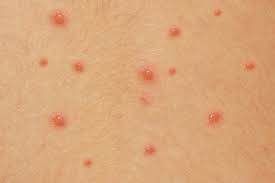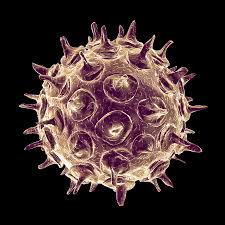Chicken pox is a highly contagious skin infection. It is caused due to virus called varicella-zoster of the herpes family virus
It mostly infects young children under 12, it may also infect to adults who has not exposed or vaccinated to the virus. It is quite common in every individual that once they are infected with chicken pox virus.
It is transmitted through the fluid from the blisters formed due to chicken pox or when the infected person coughs or sneezes
A person with chickenpox becomes contagious 1 to 2 days before their blisters appear. They remain contagious until all the blisters have dried.
The disease is usually mild, although serious complications sometimes occur. Adults and older children usually get sicker than younger children.
Children whose mothers have had chickenpox or have received the chickenpox vaccine are not very likely to catch it before they are 1 year old. If they do catch chickenpox, they often have mild cases. This is because antibodies from their mothers’ blood help protect them. Children under 1 year old whose mothers have not had chickenpox or the vaccine can get severe chickenpox.
Severe chickenpox symptoms are more common in children whose immune system does not work well because of an illness or medicines such as chemotherapy and steroids.
Table of Contents
Symptoms of Chicken Pox
Most children with chickenpox have the following symptoms before the rash appears:
- Fever
- Headache
- Stomach ache
- Chickenpox rash occurs about 10 to 21 days after the exposure to the virus. The average child develops 250 to 500 small, itchy, fluid-filled blisters over red spots on the skin.
- The blisters are usually first seen on the face, middle of the body, or scalp.
- After a day or two, the blisters become cloudy and then scab. Meanwhile, new blisters form in groups. They often appear in the mouth, in the vagina, and on the eyelids.
- Children with skin problems, such as eczema, may get thousands of blisters.
Exams and Tests for Chicken Pox
Diagnosed usually by looking at the rash and asking questions about the person’s medical history. Small blisters on the scalp usually confirm the diagnosis.
Chicken Pox Treatment
- Avoid scratching or rubbing the itchy areas. Keep fingernails short to avoid damaging the skin from scratching.
- Wear cool, light, loose bedclothes. Avoid wearing rough clothing, particularly wool, over an itchy area.
- Take lukewarm baths using little soap and rinse thoroughly.
- Apply a soothing moisturizer after bathing to soften and cool the skin.
- Avoid prolonged exposure to excessive heat and humidity.
- Use skin care medicated creams as advised by your doctor.
- The individual should be isolated from the rest of children so as to not contract to other children.
Complications of Chicken Pox
Rarely, serious infections such as encephalitis have occurred. Other complications may include:
- Reye’s syndrome
- Myocarditis
- Pneumonia
- Transient arthritis
Chicken Pox Prevention
Because chickenpox is airborne and very contagious before the rash even appears, it is difficult to avoid.
A vaccine to prevent chickenpox is part of a child’s routine immunization schedule. The vaccine usually prevents the chickenpox disease completely or makes the illness very mild.
Talk to your doctor if you think your child might be at high risk for complications and might have been exposed. Immediate preventive measures may be important. Giving the vaccine early after exposure may still reduce the severity of the disease.
The above are the details about Chicken Pox Infection and Treatment

